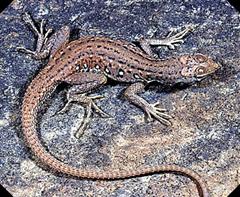Sand Lizard
Mongolian Lacerta Scientific Name: Lacerta agilis
Thu, 3rd April, 2025 - 10:41 pm GMT
Sponsor Ads:

Alternative Name
Mongolian Lacerta Scientific Name: Lacerta agilisBasic Info
At maturity, female Sand Lizards usually measure about 8.5 inches (22 centimeters) in length, and males often reach lengths of 10.5 inches (27 centimeters). Their bodies are robust in shape and the tails and heads are rather short and blunt. Although females are less brightly colored than males, both sexes of Sand Lizards have two well-defined dorsal stripes amid an oscillated dark brown and white patterning. A band of smaller scales is also present over the back. Between April and May, male Sand Lizards acquire brilliant green coloring over their normally plain green sides.
Health
Breeding Breeding season for Sand Lizards occurs between April and May, when males become more brightly colored to attract females. The male holds the female's flanks in his mouth in order to mate with her. Usually, Sand Lizards lay their eggs in May and June. The eggs are partially covered in sand, and deposited in very sunny areas. Between 40 and 60 days, these eggs hatch thanks to the sun's incubation. In most areas, only one clutch is laid each year. These young Sand Lizards will become sexually mature by the time they are two years old.Habitat
Found in many countries throughout EuropeBehavior
The Mongolian Lacerta, commonly known as the Sand Lizard, is endangered in the wild. Captive bred Sand Lizards are, however, available for purchase and can make interesting and beautiful pets! In the cold months of the year, usually November to April, Sand Lizards remain in burrows, insulated crevices, or under some sort of protective root, brush heap, or log. Generally, Sand Lizards live in sandy areas in colonies. They make burrow systems and are generally shy, running into their burrows when disturbed. In order to control the inside temperature, Sand Lizards can stuff up their entrances with vegetation. They may take over the burrows of other animals. Sand Lizards bask in low vegetation. Breeding rivalry occurs, and the male with the larger size and better stamina is usually the one that will mate with the female. To do this, males arch their backs and open their mouths, then rush at each other and bite or grapple until one lizard retreats. Although some sources believe that the Sand Lizard is monogamous, others believe that these lizards may mate with two or three different females in a breeding season.Origin
EuropeHistory
Although Sand Lizards are found in many countries throughout Europe, they have been losing their habitats and are endangered. In many countries it is illegal to remove them from the wild, and conservation programs are underway for these lacertas. In such countries, catching, killing, keeping, or selling Sand Lizards is illegal. Fires, mining, urbanization, the spread of agriculture, and deforestation have all contributed to the losses that Sand Lizards have suffered.Common Foods
Sand Lizards eat a variety of insects, though they have also been known to eat flower heads and fruits from time to time.Sponsor Ads:
- Ours is less and less a free society. -- Lawrence Lessig
Sand Lizard
Coded by: BGID® | ALL RIGHTS RESERVED Copyright © 2000-2025
Disclaimer | Privacy | Report Errors / Contact | Credits








 Preparing For China. China is growing their military. China Military Technology - can it keep up with the US?
Preparing For China. China is growing their military. China Military Technology - can it keep up with the US?  versus
versus 

 versus
versus 
 This Thread is about the North Korean Military itself - the kind of army, navy, and air force they have.
This Thread is about the North Korean Military itself - the kind of army, navy, and air force they have. 
 versus
versus 
 versus
versus  versus
versus